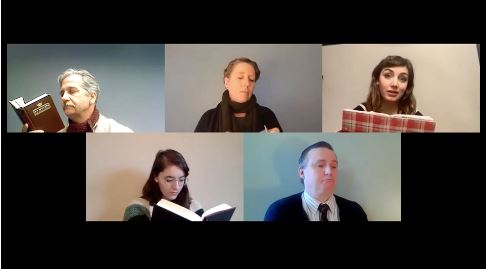* * *
Why can’t theater companies throughout America revive important small-cast plays, using Zoom to let the actors perform from their respective homes? I’m not talking about a one-shot reading but a full-fledged production—one, however, specially tailored to the unique properties of Zoom.

Now comes the answer, not from Broadway but from Park Square Theatre, a Minnesota troupe new to me whose plans to perform “The Diary of Anne Frank” for more than 12,000 students in St. Paul were sabotaged by the pandemic. Instead of abandoning the production, the members of the cast, who were already using Zoom to work on their lines, decided to move the entire show to the web. Ellen Fenster, the director, restaged the production with the technical assistance of Aaron Fiskradatz, a local theater artist and “Zoom technologist.” Billed as “a special online production created by artists in isolation,” it is far more than a mere stopgap: It is the most stirring staging of “Anne Frank” I have ever seen, a version that employs the unique properties of Zoom in a way that heightens the intrinsic drama of the play itself…
Adapted for the stage in 1955 by Frances Goodrich and Albert Hackett, “Anne Frank” is a dramaturgically old-fashioned but nonetheless thoroughly sound dramatization of the story of a Jewish teenager from Amsterdam who hid from the Nazis with her family, setting down her day-to-day experiences in a diary that she left behind when the Franks were found and imprisoned by the SS in 1944. Though Anne died in a concentration camp, her diary survived, and the stage version, which was filmed exceptionally well by George Stevens in 1959, remains a regional-theater staple. Small wonder: It tells an emotionally overwhelming story with a simplicity that brings it within reach of just about any cast imaginable, students and amateurs included.
This production, however, is in no possible way amateurish. It is acted by a very, very strong 10-person ensemble led by Sulia Rose Altenberg (Anne) and Michael Paul Levin (Mr. Frank), each member of which appears in costume in a separate Zoom box, seated in front of neutral-colored backdrops of varying shades. They speak directly to the unseen “audience,” using simple, sparing gestures but making no attempt to suggest physical interaction until the play’s climax….
* * *
Read the whole thing here.The climactic scene from George Stevens’ film version of The Diary of Anne Frank:


